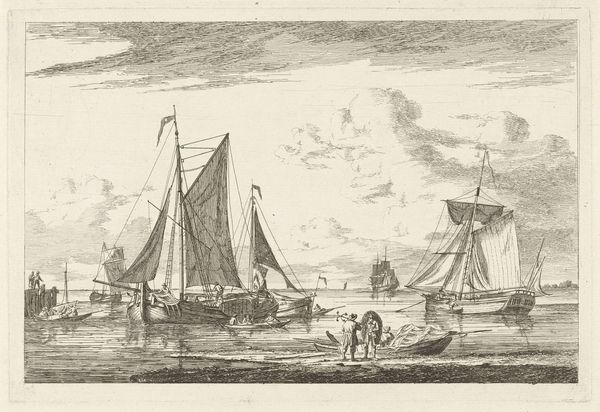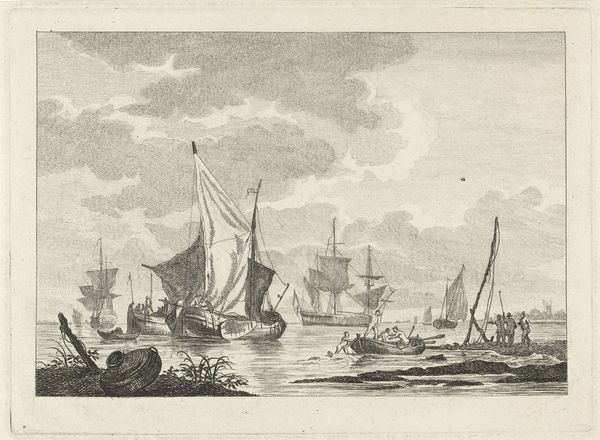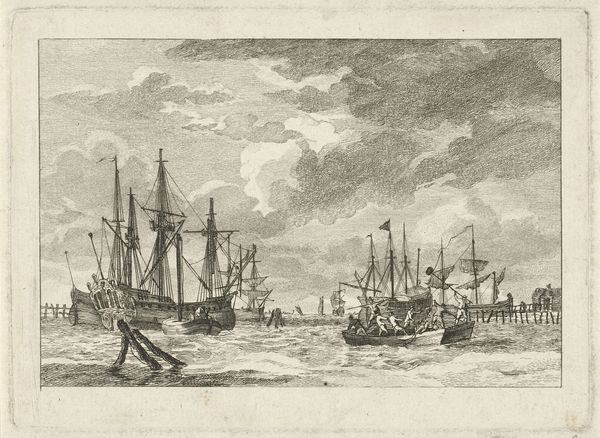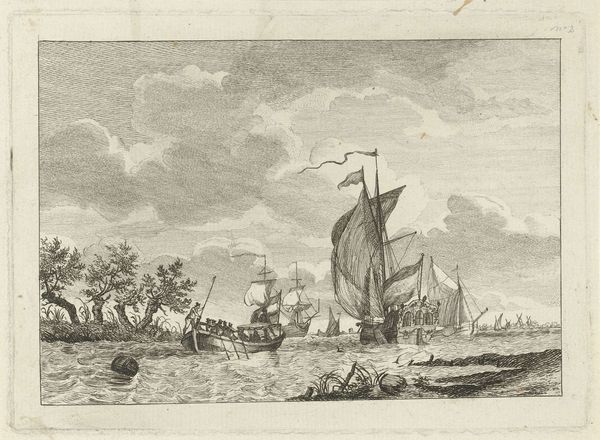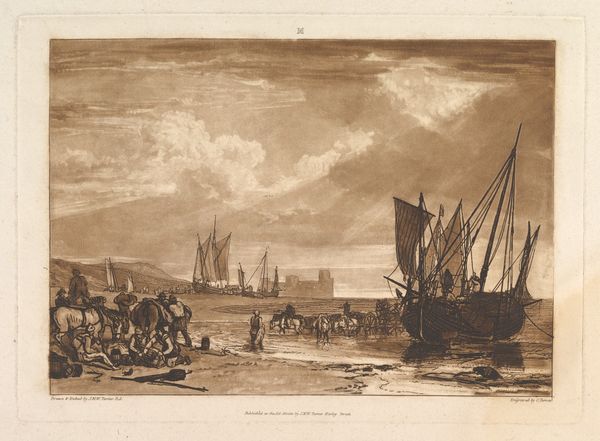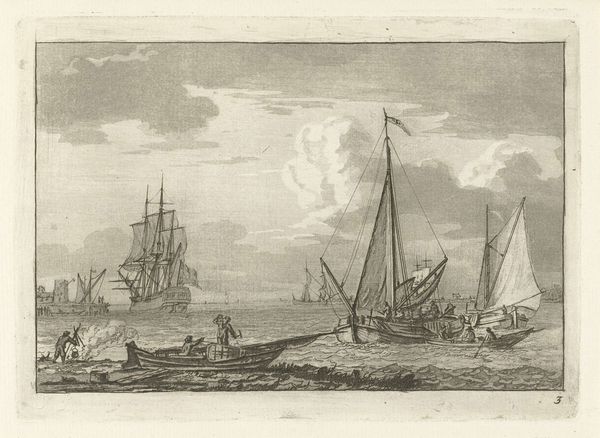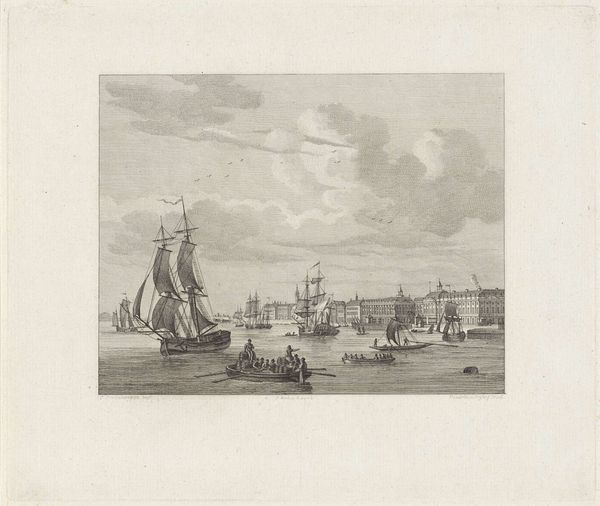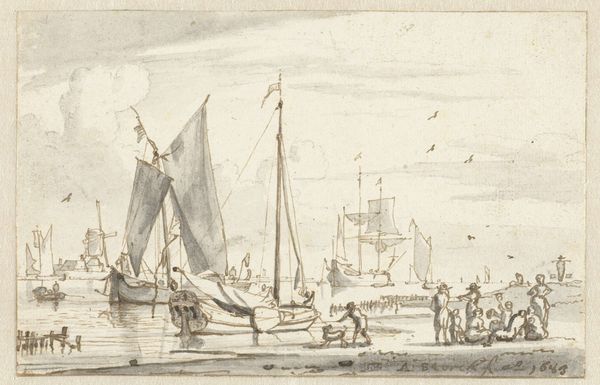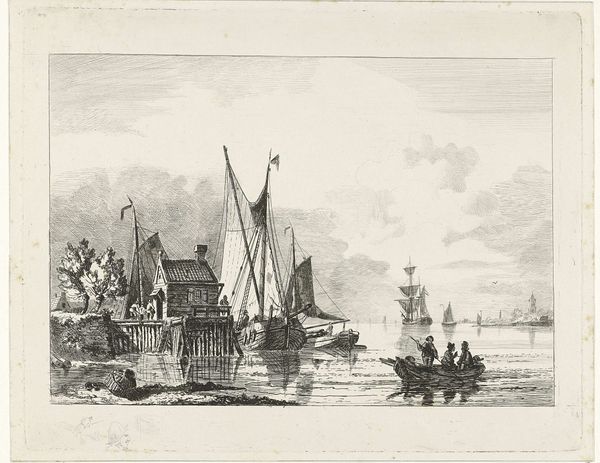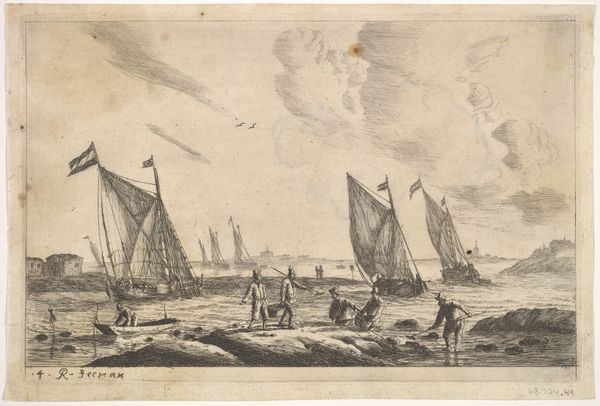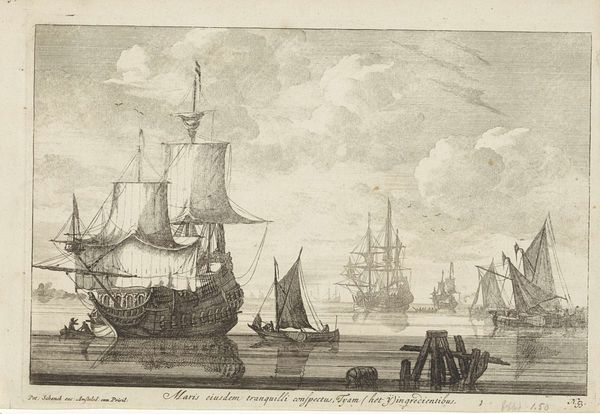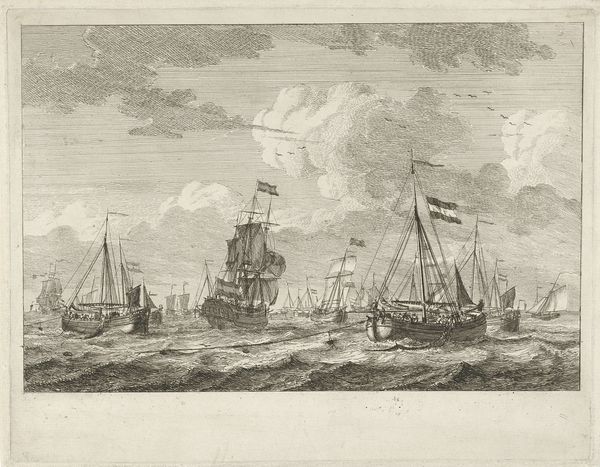
Dimensions: height 246 mm, width 319 mm
Copyright: Rijks Museum: Open Domain
Editor: We're looking at Hendrik Spilman's "Coastal View with Sailing Ships," an etching from the late 18th century. The print evokes a sense of bustling maritime activity, yet also hints at a laborious existence. What sociopolitical narratives can you weave out of this etching? Curator: It's important to view this landscape through a critical lens. While seemingly a picturesque scene of Dutch maritime life, what stories are intentionally – or unintentionally – being omitted? Think about who is represented here. Who has access to this maritime trade? And conversely, who faces barriers? The figures working so close to the shore—are they laborers, possibly marginalized members of society engaged in more difficult, less profitable aspects of maritime life? Editor: That's fascinating. I hadn't considered that contrast between the large sailing ships and the smaller boats so explicitly. Are you suggesting Spilman's choice of composition comments on social inequality? Curator: The etching provides an opportunity to reflect on how power dynamics manifest in everyday life. In particular, consider who owns the ships, who profits from the voyages, and what the human cost of this burgeoning maritime economy might be. Can we consider, for instance, the beginnings of what was to become rampant globalized exploitation through naval mercantile ventures? Editor: It changes how I see the "everydayness" of the print. It isn't just a peaceful scene, but rather an intricate visualization of 18th-century class dynamics at sea. Curator: Exactly. Remember, landscapes are never neutral. They are always implicated in power. And these visualizations shape social imagination, inviting the viewer to accept – or indeed question – these maritime ventures and the social order that underlies them. What seemed to simply be an engaging "slice of life" is anything but. Editor: This has definitely opened my eyes. Now I'm considering the unseen hands that make this maritime "slice of life" possible, and at what cost. Curator: That is the first step to critically examining canonical art through the lens of cultural and social justice. Keep questioning and keep seeking those unrepresented voices!
Comments
No comments
Be the first to comment and join the conversation on the ultimate creative platform.
